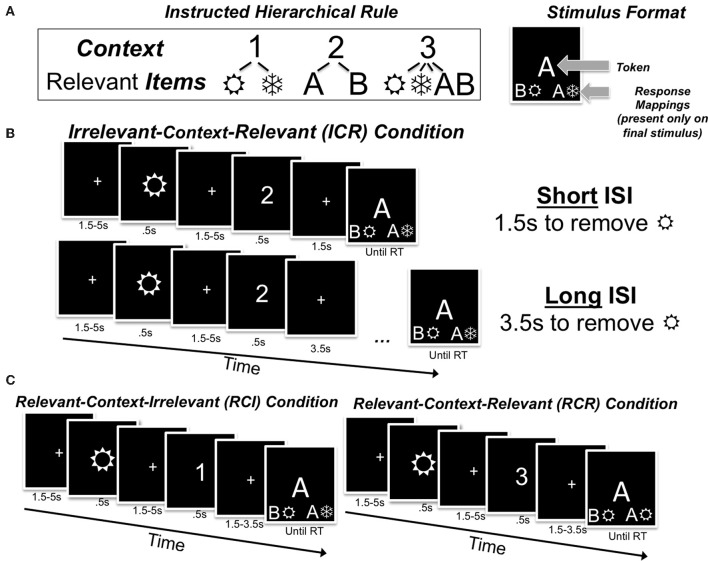Figure 1.
Task rules (A), theinterstimulus interval manipulation (B), and control conditions (C). (A) In this sequential WM task, participants are instructed that digits serve as context in determining which class of lower-level items will be relevant for selecting a response. For example, if the digit “1”/“2” appears, wingdings/letters are relevant for responses (respectively), whereas if the digit “3” appears both of the lower-level items will be relevant. Participants are to identify the relevant centrally-presented item(s) from each trial at the bottom of the final stimulus display, and press a corresponding key. (B) In the ICR condition, an irrelevant item precedes the context. With a “short” ISI, this irrelevant item may increase the effective WM load; following a longer ISI, the influence of this irrelevant item may be reduced. (C) In the RCI control condition, the relevant lower-level item is presented prior to the digit, so participants must merely identify the location of that relevant stimulus at the bottom of the final stimulus display; by contrast, in the RCR control condition, participants may experience a higher effective WM load because both items are relevant for a response.

